12 Healthiest Canned Tuna Brands
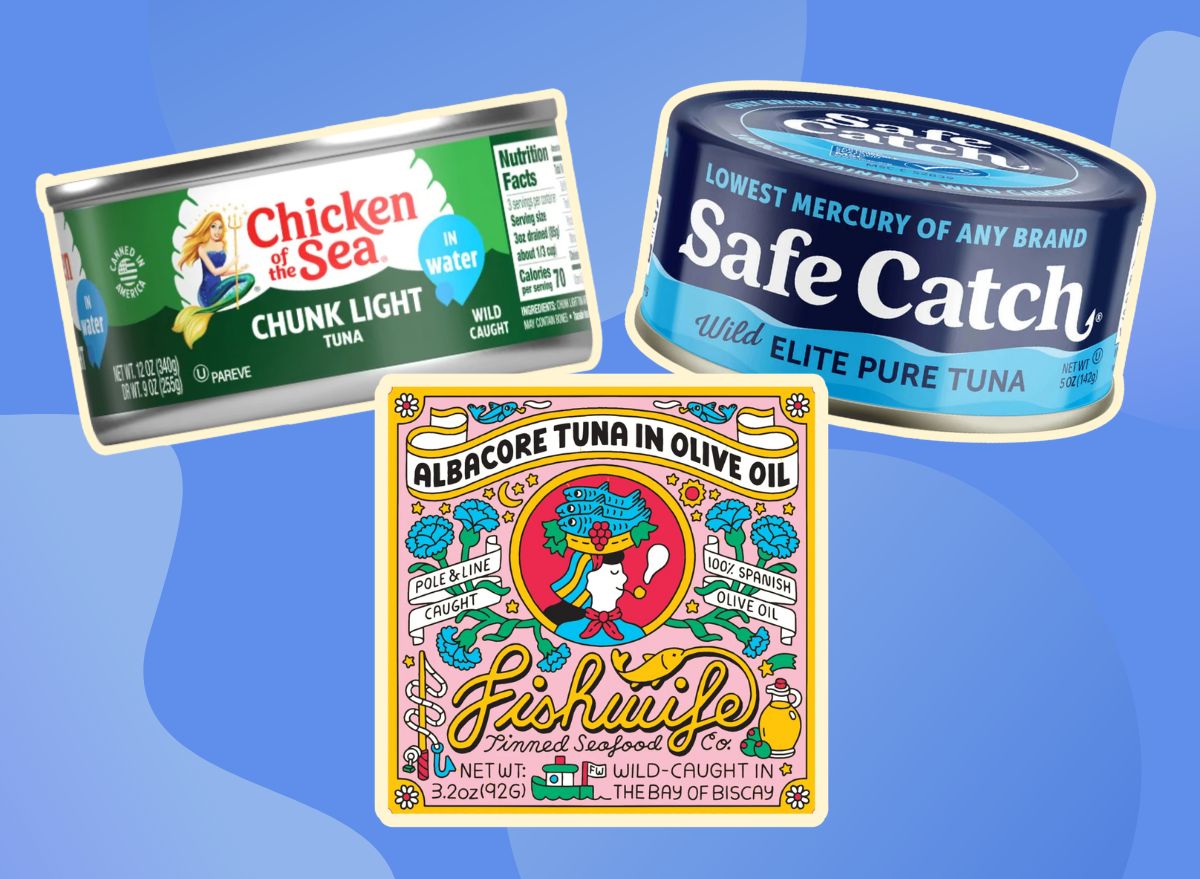
When it comes to convenient protein sources, canned tuna easily takes the gold. Whether you’re making a quick tuna salad, sandwich, or casserole, having canned tuna in your pantry is a must. However, not all canned tuna on the market is created equal, with some of the best brands having much better nutritional values and sustainability practices than other popular options.
We spoke to dietitians and nutrition experts to help you navigate the sea of options, highlighting the best canned tunas for taste, quality, sourcing, and nutritional value. Get ready to make informed choices and elevate your tuna game.
Choosing the Best Canned Tuna
When shopping for healthy canned tuna brands, there are a few factors to consider:
- Tuna Species: Choose based on flavor and texture—white albacore for a milder taste, yellowfin or skipjack for a bolder flavor.
- Oil- vs. Water-Packed Tuna: Decide if you prefer oil-packed for richness or water-packed for a lighter, lower-calorie option.
- Sustainability: Look for certifications like MSC (Marine Stewardship Council) or Dolphin-Safe, and prioritize brands using sustainable fishing practices.
- Quality: Opt for brands with sustainable practices, check the “best by” date, and avoid dented or swollen cans. Look for BPA-free cans.
Light Tuna vs. White Tuna
White tuna, or albacore, is larger, milder in flavor, and firmer in texture. It’s lighter in color and richer in taste, making it ideal for dishes requiring a meatier texture, such as tuna steaks or salads.
Light tuna, usually skipjack or yellowfin, is darker, has a stronger flavor, and softer texture. It’s often more affordable and is great for achieving a bold tuna taste in sandwiches and casseroles.
Both types are excellent sources of lean protein, omega-3 fatty acids, and essential vitamins and minerals. Your choice depends on personal preference, recipe use, and budget.
Oil-Packed vs. Water-Packed
Oil-packed tuna is canned with vegetable or olive oil, which helps preserve the tuna’s flavor and texture while providing a rich, moist product. Fat-soluble vitamins and the tuna’s nutrition are also preserved here, but oil-packed tuna tends to have a higher calorie count.
Water-packed tuna is canned with water, typically with a small amount of salt or broth for flavor. This method results in a lighter and more natural taste, allowing the singular flavor of the tuna to shine through. Water-packed tuna is often preferred by individuals watching their calorie or fat intake, as it generally has fewer calories and less fat than oil-packed tuna.
Oil-packed tuna may be more suitable for recipes that benefit from the richness of the oil, such as pasta dishes or salads, while water-packed tuna can be a healthier option for those looking to reduce their fat intake or enjoy a simple, more straightforward tuna flavor.
Sustainable Fishing Practices
The method of catching tuna is a big deal for sustainability. Pole- and line-fishing and trolling are two highly sustainable methods that ensure other species don’t get caught in the mix. Pole and line means exactly what you think: one person with a pole, catching one fish at a time. Trolling uses a boat with a few poles. Avoid tuna brands that use the general term “line caught,” which can mean the company uses other methods that sound safe but are not as sustainable—like long-line fishing.
Mercury in Tuna
The mercury content of tuna is a concern, especially for pregnant women, nursing mothers, and young children. When consumed in high amounts, mercury can adversely affect the nervous system, including brain development in infants and young children. Different species of tuna contain varying levels of mercury. Generally, larger and longer-lived tuna species, such as albacore, bluefin, and bigeye, tend to accumulate higher levels of mercury in their tissues. It’s important to note that the health benefits of consuming fish, such as the omega-3 fatty acids, iodine, and protein they contain, should also be taken into account. The FDA recommends that pregnant and breastfeeding women eat at least 8 to 12 ounces of lower-mercury fish each week, balancing the nutritional benefits and potential risks.
By following these guidelines, you can make the best choices for your health and the environment. Enjoy your next canned tuna dish with confidence with the help of these dietitian-approved brands.
The Healthiest Canned Tuna Brands
- Wild Planet Albacore Wild Tuna
- American Tuna
- Safe Catch Elite Pure Wild Tuna
- Fishwife Albacore Tuna in Olive Oil
- Tonnino Yellowfin Tuna Fillets in Spring Water
- Scout Wild White Albacore Tuna
- Ocean's Skipjack Chunk Light Tuna in Water
- Whole Foods 365 Albacore Wild Tuna in Water
- Trader Joe's Wild Skipjack Tuna
- Blue Harbor Fish Co. Wild Albacore
- Chicken of the Sea Chunk Light in Water
- Good & Gather Chunk Light Tuna in Water
Wild Planet Albacore Wild Tuna
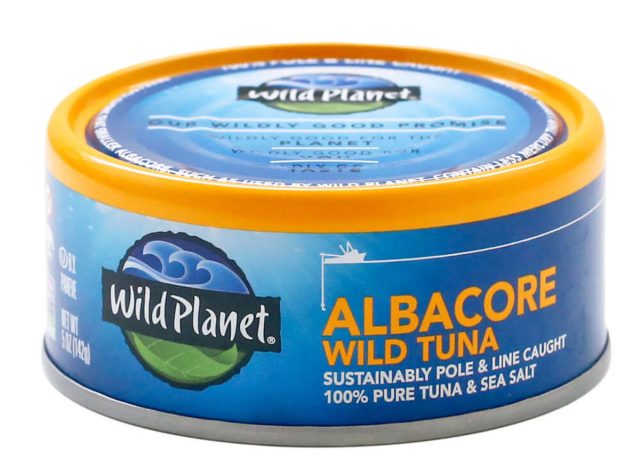
Calories: 180
Fat: 5 g (Saturated Fat: 1.5 g)
Sodium: 310 mg
Carbs: 0 g (Fiber: 0 g, Sugar: 0 g)
Protein: 33 g
According to Kelsey Kunik, RDN, “Wild Planet tuna tastes amazing and is lower in mercury than other brands, thanks to the sustainable practices they implement like pole and line fishing and only using specific species and sizes of tuna.”
Similarly, Lauren Harris-Pincus, MS, RDN, author of The Everything Easy Pre-Diabetes Cookbook, endorses Wild Planet. She says, “I second Wild Planet Albacore Tuna because the tuna is hand-packed with no water, oil, or filler added, and it’s cooked inside the can, so all of the omega 3 fatty acids are retained with an average of 705 milligrams of EPA/DHA omega-3’s per serving! The liquid you see when you open the can is the omega-3s, so no draining is needed.”
Also, if you go with a 3-ounce serving instead of 5 ounces, you can significantly lower the amount of calories, fat, and sodium, and you’ll still be getting plenty of protein.
American Tuna
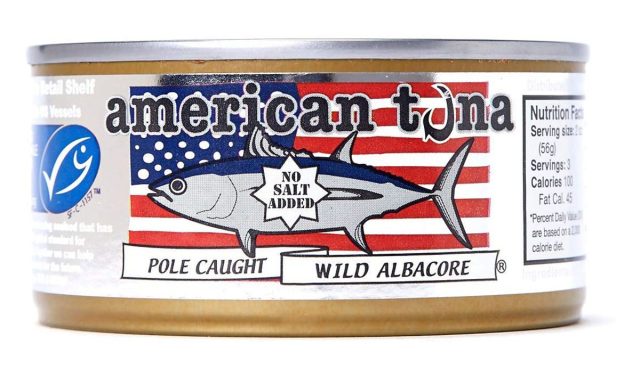
Calories: 170
Fat: 8 g (Saturated Fat: 2 g)
Sodium: 40 mg
Carbs: 0 g (Fiber: 0 g, Sugar: 0 g)
Protein: 23 g
American Tuna was born in 2005 out of a collaboration between six San Diego-based American pole- and line-fishing families “to raise awareness and bring to market sustainably sourced seafood that supports U.S. fishing communities,” according to the brand’s About Us page. Renowned for its pole- and line-caught products, dedication to ocean conservation, and traceability system that ensures transparency from sea to can, American Tuna has received commendable ratings from Greenpeace.
In addition to the brand’s commitment to sustainability, it offers a diverse range of flavors, including options like brick-smoked and jalapeño, catering to various culinary preferences. Notably, this brand takes pride in its superior nutritional profile, boasting the highest omega-3 content among other tuna brands.
Safe Catch Elite Pure Wild Tuna
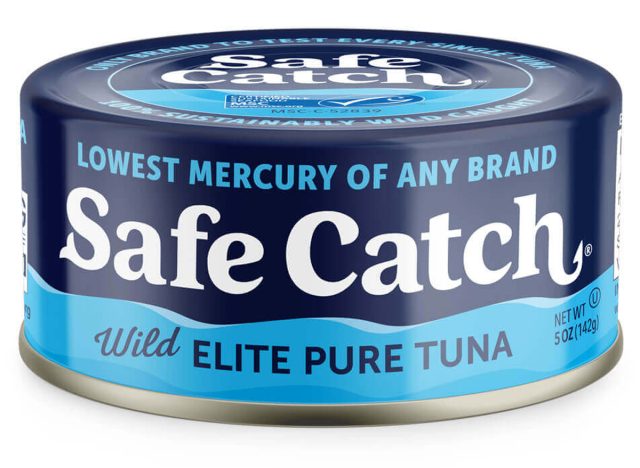
Calories: 100
Fat: 0 g (Saturated Fat: 0 g)
Sodium: 210 mg
Carbs: 0 g (Fiber: 0 g, Sugar: 0 g)
Protein: 24 g
“Safe Catch Elite Wild Tuna tests every tuna that is canned, ensuring that the mercury content is lower than what the FDA deems safe. It is sustainably caught, and it is one of the official tunas of the American Pregnancy Association. The brand claims that Safe Catch Elite is the tuna that is the lowest in mercury compared to other brands available,” shares Lauren Manaker, MS, RDN, LD.
Fishwife Albacore Tuna in Olive Oil
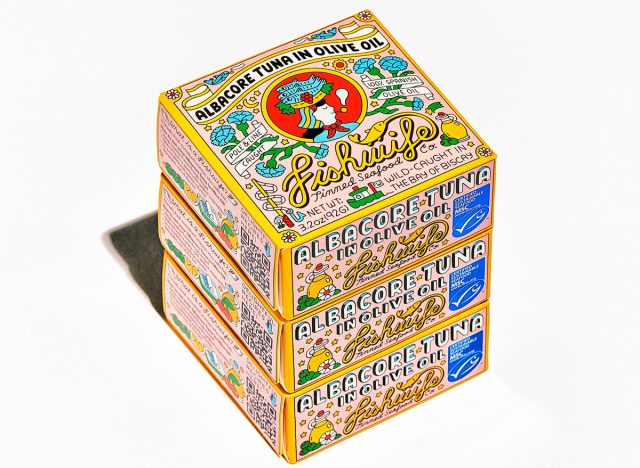
Calories: 190
Fat: 13 g (Saturated Fat: 2 g)
Sodium: 270 mg
Carbs: 0 g (Fiber: 0 g, Sugar: 0 g)
Protein: 17 g
Fishwife Albacore Tuna in Olive Oil offers a top-tier tuna experience. The albacore, caught in the Bay of Biscay using hook-and-line methods, is harvested during the prime fishing season from June to August to ensure the best quality. This Marine Stewardship Council-certified tuna is then packed in a traditional Spanish cannery that has been refining its artisanal canning process since 1869. Each tin is hand-packed with Spanish olive oil and a touch of salt, enhancing the tuna’s natural flavors and providing a rich, satisfying taste.
Tonnino Yellowfin Tuna Fillets in Spring Water
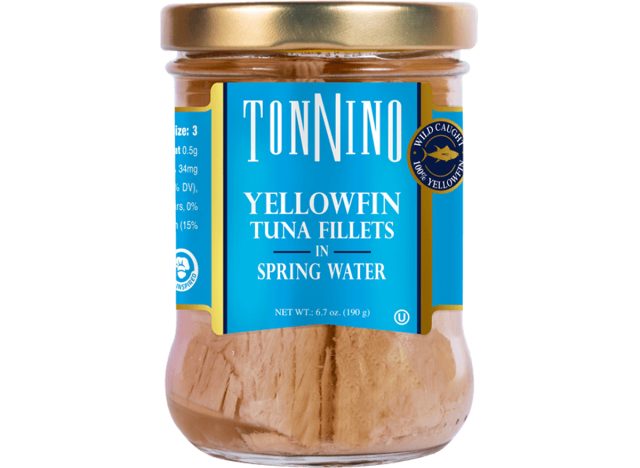
Calories: 70
Fat: 0.5 g (Saturated Fat: 0.5 g)
Sodium: 180 mg
Carbs: 0 g (Fiber: 0 g, Sugar: 0 g)
Protein: 16 g
Tonnino Tuna, a premium gourmet offering hailing from Costa Rica, delivers an exceptional experience compared to conventional canned tuna. Presented in beautiful glass jars, it is available in water or olive oil in a range of tantalizing flavors like garlic, capers, and jalapeño.
The brand exclusively sources its tuna from vessels registered with CIATT, a conservation-focused group that ensures the preservation of resources. On-board observers guarantee that no species other than tuna are caught, reflecting the brand’s commitment to responsible fishing practices.
Scout Wild White Albacore Tuna
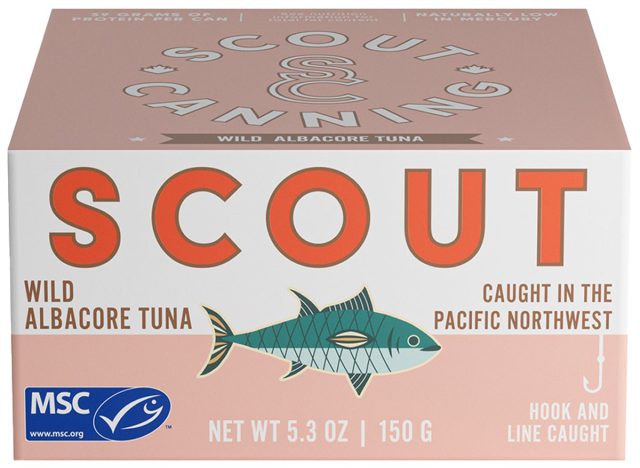
Calories: 240
Fat: 20 g (Saturated Fat: 2.5 g)
Sodium: 350 mg
Carbs: 0 g (Fiber: 0 g, Sugar: 0 g)
Protein: 15 g
Scout’s albacore tuna is wild-caught between Oregon and British Columbia. It is naturally low in mercury, high in protein (30 grams per can), and rich in Omega-3s.
Scout now offers a Seafood Snack Kit that simplifies the experience of enjoying premium, sustainable seafood. Each kit pairs yellowfin tuna with a crunchy topper inspired by trending international taste profiles, including Chili Crisp, Chili Jalapeño, and Za’atar. Scout Seafood Snack Kits come complete with a mixing bowl and spork for about 30 grams of protein on the go.
Ocean’s Skipjack Chunk Light Tuna in Water
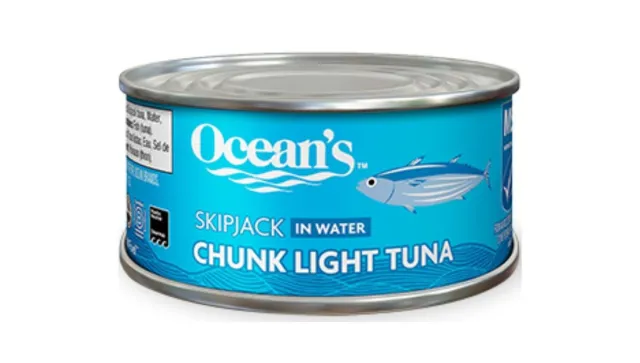
Calories: 60
Fat: 0.5 g (Saturated Fat: 0 g)
Sodium: 180 mg
Carbs: 0 g (Fiber: 0 g, Sugar: 0 g)
Protein: 15 g
Recognized with a “green” label rating from Greenpeace, this international tuna company prioritizes responsible fishing practices and maintains a commitment to transparency.
Ocean’s sets an example by clearly indicating the specific fish species used in each product, and its ingredient list remains minimal, consisting only of fish, salt, water, or olive oil. Notably, their skipjack tuna provides an impressive 230 milligrams of omega-3 fatty acids per serving. Moreover, their light meat tuna solely comprises 100% skipjack, avoiding the use of multiple species to protect those that are endangered.
Whole Foods 365 Albacore Wild Tuna in Water
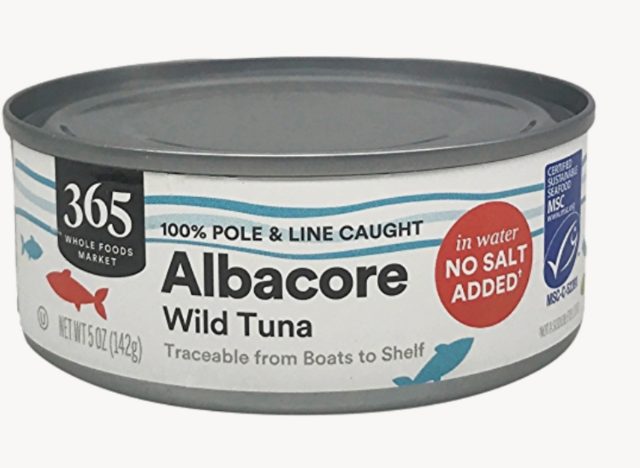
Calories: 170
Fat: 6 g (Saturated Fat: 1.5 g)
Sodium: 310 mg
Carbs: 1 g (Fiber: <1 g, Sugar: 0 g)
Protein: 27 g
With a firm commitment to responsible sourcing, Whole Foods’ private label emphasizes strong traceability measures. Notably, Whole Foods holds the distinction of being the first US retailer to pledge the sale of exclusively 100% sustainable-canned tuna. Their albacore tuna in water is a highly recommended choice, especially for those seeking a low-sodium option.
Trader Joe’s Wild Skipjack Tuna
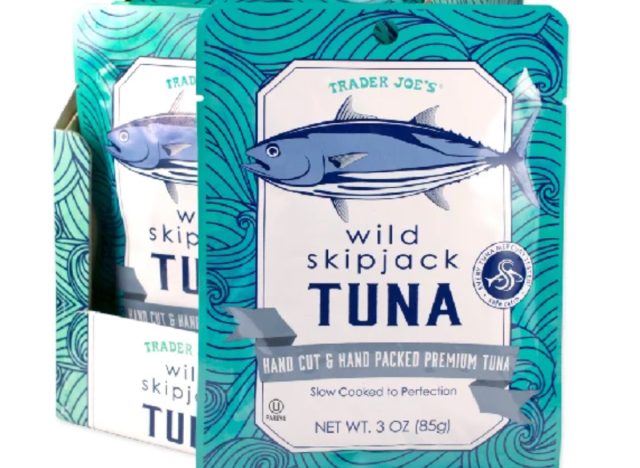
Calories: 90
Fat: 0.5 g (Saturated Fat: 0 g)
Sodium: 280 mg
Carbs: 0 g (Fiber: 0 g, Sugar: 0 g)
Protein: 22 g
“Trader Joe’s Wild Skipjack Tuna is my top choice for an affordable and high-quality tuna option,” says Kristin Draayer, MS, RDN. “It mixes seamlessly to make the perfect tuna salad. This option also offers a healthy balance of omega-3s while being low in mercury and arsenic levels.”
TJ’s tuna is sustainably caught in Thailand, and each fish is individually tested for mercury.
Blue Harbor Fish Co. Wild Albacore
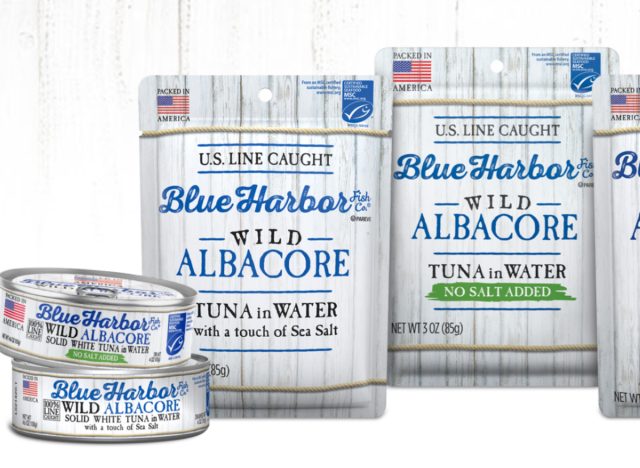
Calories: 150
Fat: 2 g (Saturated Fat: 0.5 g)
Sodium: 200 mg
Carbs: 0 g (Fiber: 0 g, Sugar: 0 g)
Protein: 32 g
“I’m a fan of the Blue Harbor Fish Company’s albacore tuna in water. This brand ensures they are using sustainable practices. They also use wild-caught over farm-raised tuna, which has more omega-3s. Lastly, they do not have any added salt to the fish,” says Nicole Ibarra, RD.
And with 32 grams of protein per serving, you’ll be getting more than half of your daily recommended value of protein in one can!
Chicken of the Sea Chunk Light in Water
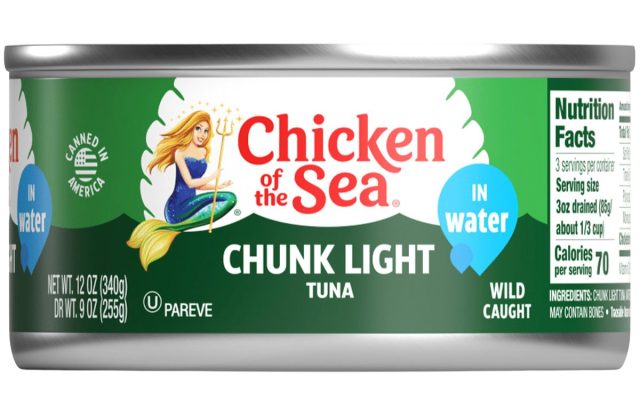
Calories: 100
Fat: 1 g (Saturated Fat: 0 g)
Sodium: 140 mg
Carbs: 0 g (Fiber: 0 g, Sugar: 0 g)
Protein: 20 g
Chicken of the Sea’s website highlights its sustainable fishing commitments, which are now certified through the Marine Stewardship Council (MSC). We also love that the brand provides a lower-sodium variant for those watching their sodium intake.
Lisa Andrews, MEd, RD, LD, tells us why she enjoys Chicken of the Sea: “It’s responsibly sourced, affordable, and has several options. I like that it’s available in pouches, and there’s no can opener needed at lunch,” says Andrews.
Good & Gather Chunk Light Tuna in Water
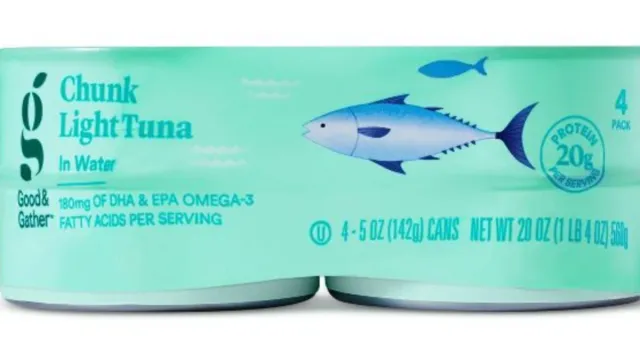
Calories: 90
Fat: 0.5 g (Saturated Fat: 0 g)
Sodium: 360 mg
Carbs: 0 g (Fiber: 0 g, Sugar: 0 g)
Protein: 20 g
Now recognized by the Marine Sustainability Council, Target’s house brand Good & Gather’s Chunk Light Tuna boasts the MSC seal of approval for its sourcing and commitment to sustainable fishing practices. However, this particular tuna exhibits significantly higher sodium levels (360 milligrams) compared to the other tunas mentioned in this list, so if you’re concerned about sodium, try one of the lower sodium options on our list.
Why Trust Eat This, Not That!?
Eat This, Not That! is committed to creating high-quality content that you can trust to be accurate, properly researched, routinely reviewed, and updated with the latest information. Our writers, editors, and medical and/or certified experts consider this to be an unwavering promise we make to our readers in the pursuit of delivering impactful and meaningful content.









